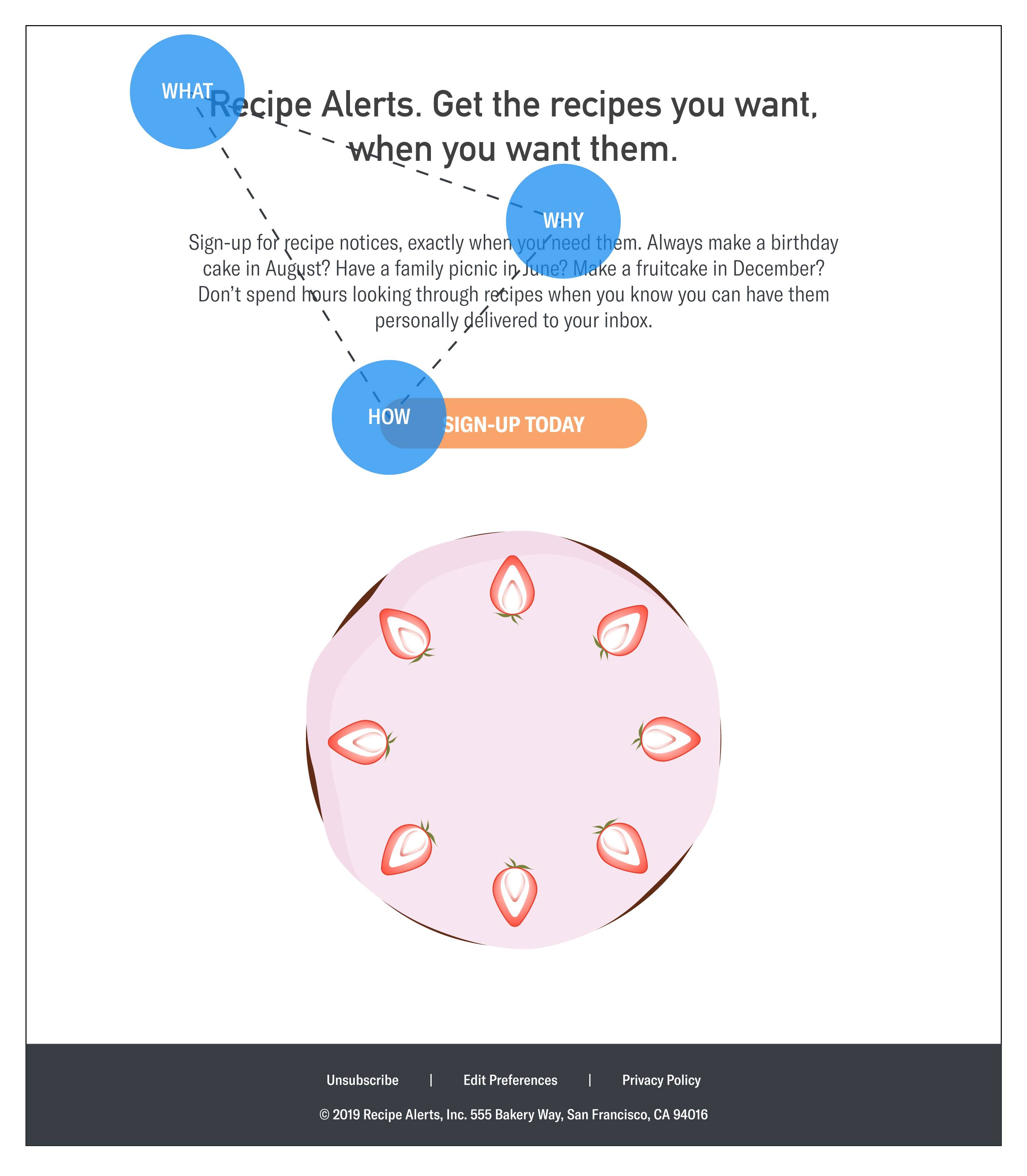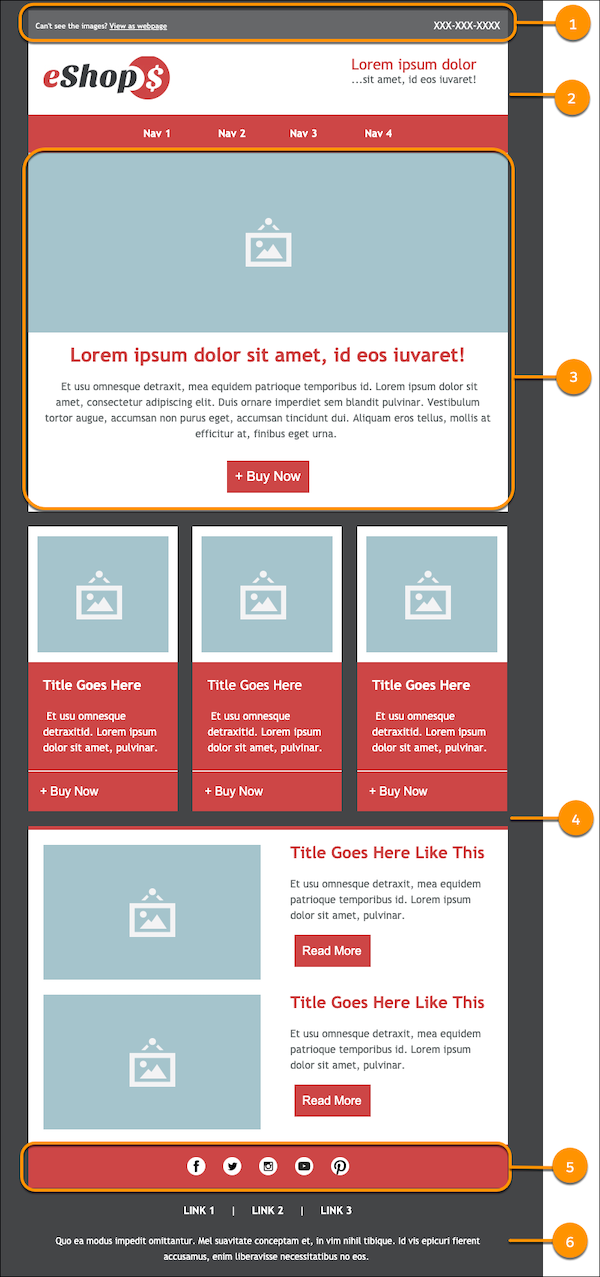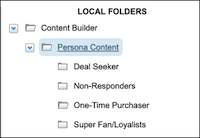Create Great Content
Learning Objectives
After completing this unit, you’ll be able to:
- Identify the elements of your email.
- Determine where personalization fits in your email.
- Develop your content library to support personalization.
Focus on Content
Let’s face it, customers receive a lot of emails in their inbox. And inbox competition can lead marketers to focus on quantity over quality. Don’t be fooled. More is not always better when it comes to email marketing. Customers expect their messages to be personalized and relevant. That can take time and planning, but it’s worth it to make every send count. And now that you asked for the data, customers expect you to use the data. That’s right, customers tend to notice if they’ve given you information that your messages don’t reflect. How do you make sure your emails keep up with the conversation? It’s time to focus on your content.
Identify the What, Why, and How
Think of emails like real estate—location is important. Users want to see the most important information first. When creating your content, figure out what is most important and move it to the top. Then ask yourself these three questions.
- What is this email about?
- Why should customers care?
- How do customers get to what they care about?
Were those questions easy to answer? Can your customer find your email’s what, why, and how in a single glance—without zooming, scrolling, or tapping?
Let’s review how you can check, with this example email.

What: Recipe Alerts
Why: Receive recipes when you need them.
How: Sign Up Today (CTA button to website)
Once you’ve identified the what, why, and how, draw a triangle between these messages. The size and location of your triangle can illustrate whether or not your top three messages are easy to spot. Is the triangle close together and near the top of the email? That’s ideal. Or is one message farther away than another? Do you have to scroll to see one of these messages? Is any message missing?
Now review one of your company’s emails, and see if you can tighten your triangle. While you’re at it, here are some more copy and layout questions to review as you look at your emails.
- Who is your audience? Does the copy speak to them?
- Is your content well written and concise with plenty of white space? (No one likes a bunch of wordy paragraphs.)
- Does your content showcase your brand’s voice and tone?
- Do you use abbreviations, symbols, or jargon that might be confusing?
Once you know the what, why, and how of your messages, take it one step further by personalizing your content.
Make Your Message Personal
Subscribers get a lot of mail. How will your emails stand out from the rest? Let’s take a look at the key components of an email to identify where you can include personalization. Get ready to delight your subscribers.
 1. Preheader: Don’t skip this small but mighty line! As a reminder the preheader is the text following the subject line when an email is previewed in the inbox. A preheader is one of the first three items a subscriber sees when viewing an email, so hook your audience by including the most important information in the preheader text of every email. This is also a great place to add personalization, like a reference to their favorite product.
1. Preheader: Don’t skip this small but mighty line! As a reminder the preheader is the text following the subject line when an email is previewed in the inbox. A preheader is one of the first three items a subscriber sees when viewing an email, so hook your audience by including the most important information in the preheader text of every email. This is also a great place to add personalization, like a reference to their favorite product.
2. Header and Navigation: No surprise here, this is where your brand’s logo and key navigation goes. This area probably won’t change much from email to email, but it can be personalized with things like featured pages based on a subscriber’s interests.
3. Primary Message and CTA: This content block is the main reason for sending your email. It should be concise, easy to scan, and include a clear call to action (CTA). Remember your what, why, and how. Have fun with this section and change out imagery or even the CTA, based on data you have about a customer.
4. Additional Content Blocks: Build a library of dynamic content blocks that you can quickly drag and drop, based on your campaign needs. More on this later.
5. Social Media: Yep, this is just your social media links.
6. Footer: This is your fine print and includes an unsubscribe link, compliance information, and disclaimers. (Psst… it’s illegal to hide this info. And who’d want to? After all, it’s where you can promote your brand-new custom preference center.)
Define Your Personas
Now that you have identified what is important and the key areas that you want to personalize, it’s time to identify the people—or personas—you want to reach. As a marketer, you might be familiar with creating personas from a segmentation perspective. Good news: This is a similar exercise. Creating a library of content that is identified by personas can really be a time-saver when creating campaigns. Especially as you add in those secondary content blocks for your emails. Once you have perfected your main message, select a preexisting personalized content block for your secondary content and you are good to go. Let’s look at some examples of how to connect personas to data points and then some possible content that supports the data.
| Persona |
Data Points |
Content |
|---|---|---|
| Super Fan |
|
|
| Deal Seeker |
|
|
| One-Time Purchaser |
|
|
Remember we don’t want to make too many assumptions about someone, but we do want to let them know that we get them and they are special.
Build Your Content Library
Once you have personas identified, you can start building out content that corresponds to those personas. Review all the stock images you own, review your product catalog, and then map all of your existing content to data points you are collecting. Identify gaps and create new content to fit those opportunities. Don’t forget to also identify content as possible default content—this is what displays when you don’t have clear information about a customer.

Tip: Organize your content library by creating folders based on data points.
Additional content block suggestions:
- Location of your nearest office or store
- Local weather or tips based on weather
- Weekly specials
- Fun facts or a special deal
- Article teaser about holiday prep
- Image carousel of most popular products
Once you have your list of content that you want, it’s time to dig in and start building. Create dynamic subject lines, build dynamic content blocks, and try out enhanced dynamic content. This is the fun part! Want to learn more about how to build dynamic content? Head to the Trailhead module Content Builder Features to get the scoop. The more content blocks you have at your fingertips, the easier it is to create great emails in a snap.
In the next unit we focus on design fundamentals so you can not only have great email content, but content that looks great.
